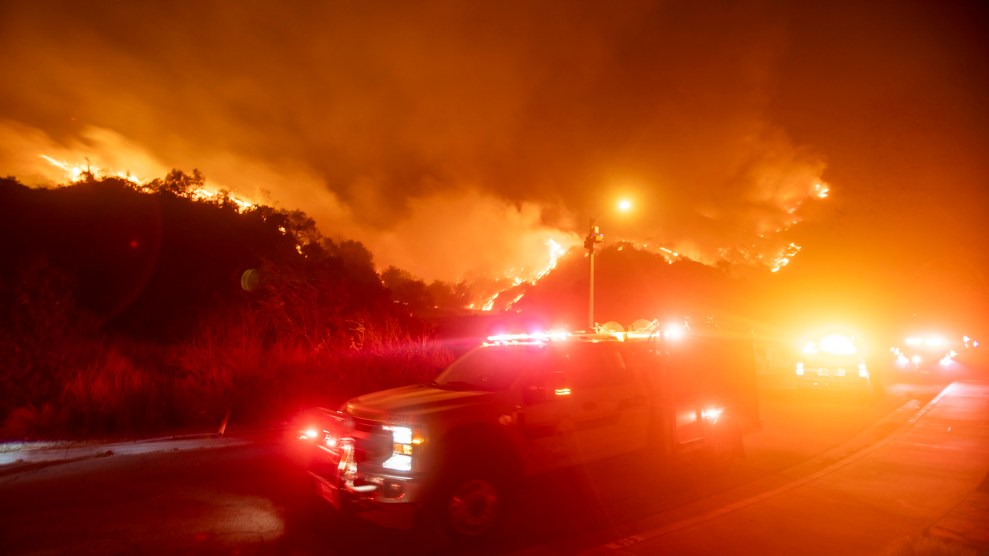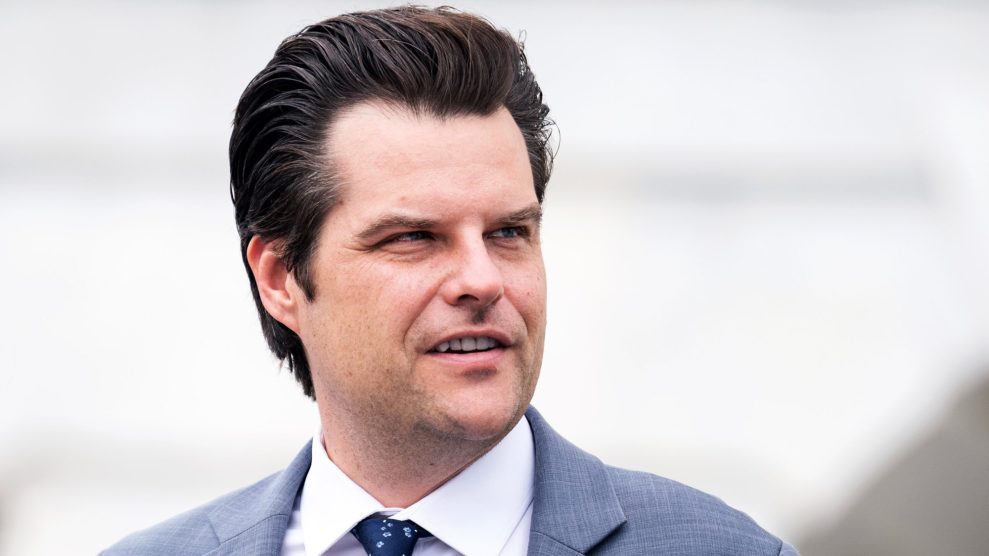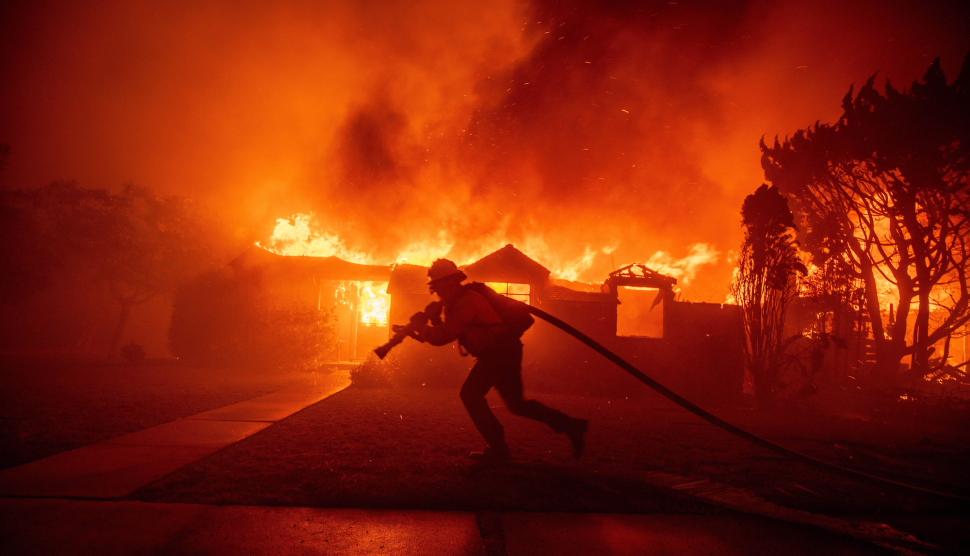The insurrection in Shia areas of Iraq was not a sudden explosion, nor was it primarily inspired by the events in Falluja. It was, instead, the result of a long series of actions and reactions between the Coalition’s armed forces and increasingly organized and anti-American Shia militias. The most important single event was the immensely important, but barely reported, announcement by Coalition Provisional Authority head L. Paul Bremer, that the United States had “found a legal basis for American troops to continue their military control over the security situation in Iraq” even if the Iraqis ask the U.S. to leave after June 30. (John Burns and Thom Shanker, “The Struggle for Iraq,” the New York Times, March 26)
The whole story began last year when the U.S. responded to continuing casualties after “major combat operations” were completed by revamping its plan for pacifying the country. At that time, as Seymour Hersh discussed in detail in the New Yorker, the Bush administration adopted an extremely aggressive policy toward attacks by insurgents, utilizing strategies developed by the U.S. in Vietnam and the Israelis in the Occupied Territories. At the same time, to reduce casualties and permit the massing of troops for these punitive operations, the Coalition withdrew its troops from the centers of peaceful cities and towns, and allowed them to more-or-less govern themselves with a small, but growing, contingent of the newly trained Iraqi police force.
In Shia areas, the new policy basically meant that Coalition troops became barely visible, and — in response — the various armed militias set aside their arms. This included the Mahdi Militia loyal to Muqtada Sadr and the Badr Brigade, representing the Supreme Council for the Islamic Revolution in Iraq, but reputedly loyal to Ayatollah Al-Sistani. This did not mean, however, that the Shia religious leaders passively accepted Coalition rule. Quite the contrary, during this period of quiescence, which extended from last December until late March, they were the principle organizing force within southern cities: the militia members, without their guns, were still responsible for keeping order and suppressing hooliganism; the Sharia courts, run by the Shia clergy, became the key judicial institutions in these cities, adjudicating all matters from personal disputes to major crimes; and there arose a lively press, most notably Sadr’s Baghdad newspaper, Al Hawza (John Burns, 7 U.S. Soldiers Die in Iraq as a Shiite Militia Rises Up, the New York Times). In fact, most reporters, even those from mainstream outlets, acknowledged that it was already dangerous for Americans (or anyone associated with Americans) to travel alone or at night in these areas (Christine Hauser, Foreign Civilians in Iraq Are Armoring Up and Keeping Under Guard, the New York Times)
This nervous truce was definitively threatened on March 25, when Bremer announced that the U.S. was definitely going to keep a huge force of occupying troops in Iraq, regardless of whether the new government requested their departure. This announcement was so blunt and to the point that it also detailed all the mechanisms the Bush administration would use to insure that the new Iraqi government enacted and accepted the entire package of policies dictated by the United States. Here are the key elements in the Bremer pronouncement:
1. The U.S. occupation itself would be used as a club against any Iraqi activities of which the Bush administration disapproves. According to the New York Times, “Top aides to Mr. Bremer have said in recent days that the American troops will act as the most important guarantor of American influence.”
2. The U.S. would control the newly formed Iraqi army. The Times wrote of Bremer’s document: “The document was unequivocal on the ultimate control of the Iraqi forces. ‘All trained elements of the Iraqi armed forces shall at all times be under the operational control of the commander of Coalition forces for the purpose of conducting combined operations,’ it said.”
3. The U.S. would have permanent bases in Iraq. The 14 planned bases would be capable of housing over 100,000 troops, and are expected to be a part of the permanent American presence in the Middle East.
4. The $18.4 billion in congressionally mandated reconstruction aid would be used as a guarantor of U.S. influence. According to the Times it would “give Americans a decisive voice” in the short run because it would be virtually the only cash available to establish and maintain public services. But more significantly, since it would be used over the next few years to modernize Iraq’s electricity, communications and transportation systems, it would give the U.S. Embassy — projected to be the largest in the world, with over 3000 employees — policy control over the Iraqi infrastructure for the foreseeable future.
In summary, the Bremer pronouncement made it clear that the Bush administration expected to retain a large military force in Iraq, with or without the consent of the new Iraqi government, and intended to retain control of the newly formed Iraqi army as well. It would then use this monopoly over the forces of “law and order,” as well as the direct control it would retain over crucial public services, to dominate policy in the fledgling Iraq government, regardless of how it is selected and what stance it seeks to adopt toward the United States.
Even the New York Times, which treated this as a secondary off-the-front-page story, felt compelled to remark on the significance of this document in its hallmark understated style: “A European diplomat said that continued American military control ‘sends the wrong signal’ and ‘gives an impression of continuing foreign occupation’ in Iraq.”
Needless to say, the reaction within Iraq was somewhat less restrained. The radio outlet for the Supreme Council, the Voice of the Mujahidin, described the Bremer pronouncement thusly (reported on the BBC website, April 8, 2004):
“Among the key promises that the occupation authority gave to the Shi’i leadership is the restoration of national sovereignty on a date not to go beyond next June…. The supposed restoration of national sovereignty, of course should be preceded by an end to U.S. occupation. The plan, however, entrenches the occupation and legitimizes its presence. According to its drafted agenda, the United States will jump ahead of the formation of the national government and legalize the presence of the occupation forces for an indefinite period….”
According to the Voice of the Mujahidin, this represented the moment when even the moderates, led by Ayatollah Al-Sistani, concluded that the June 30th transfer of sovereignty had no hope of allowing the Iraqi people to exert real control over government policy. Of course, the reaction of the militants was far more electric and, among other things, their news outlets were increasingly energized and their militiamen, who had never disposed of their weapons, began to see them as once again of immediate relevance.
It seems likely that the Bremer announcement would eventually have led to some sort of definitive confrontation around the issue of “sovereignty,” though it might have been less violent and/or much more broadly supported by the full range of the religious leadership. As it was, however, the Coalition did not wait to see how the resistance was going to develop. Instead they began an immediate assault against the young cleric and head of the Mahdi Army, Muqtada Sadr, whom they saw as the key figure among the militants.
Sadr had long been their target, as this account by Douglas Jehl in the New York Times demonstrates:
“The question of what to do about Mr. Sadr, 31, the leader of the most anti-American Shiites in Iraq, has been debated actively for months by senior American officials, the Defense Department officials acknowledged….A secret plan to have American forces snatch Mr. Sadr was scrapped last fall only days before it was to have been carried out, senior Bush administration and military officials said, confirming a report in The Wall Street Journal.”
However, in late March they reactivated their plans and began what was clearly a campaign aimed at removing him as a viable force in Iraq. First, they shut down his newspaper, using the argument that it was printing false accusations of American responsibility for civilian casualties (and that such false reports were leading people to take up arms against the occupying army). This was clearly meant to limit Sadr’s ability to respond to what was to come, because, even before the protests over this shutdown had fully developed, they arrested one of his chief aides, and tried to arrest him, based on a murder warrant they claimed an Iraqi judge had issued many months previously. At the same time, they began an effort to shut down the Sharia courts in Najaf, the center of Sadr’s support. Taken as a whole, these measures represented an unadorned effort to dismantle his organization.
All this led Sadr to believe that the occupation authorities were definitively moving against him. Whether or not he was already planning an insurrection, this certainly forced his hand, leading him to call out his armed supporters to preempt the attack on him. Mahdi’s Army, his militia, retrieved their arms from caches in and around their residences and, together with a number of other religious militias, moved to expel the coalition from the cities where they were strongest. The fact that they were able to move so quickly demonstrates that the long period of quiescence had actually been one in which they continued to organize, unhindered, while they waited to see if the U.S. would peacefully begin to withdraw in June. When Bremer’s announcement dashed those hopes, the whole organization was primed for action.
The year of preparation was vividly caught by Jeffrey Gettleman of the Times in the final paragraphs — where the best material often is — of an April 7 piece, At Word of U.S. Foray, a Baghdad Militia Erupts:
“Mohammed Kadem, a 23-year-old Mahdi Army fighter from Khadamiya, said the force had been lying quietly for months, with arms they looted nearly a year ago. ‘We just kept them in our homes,’ Mr. Kadem said. ‘We knew this time might come.’ Mr. Kadem detailed a training program in which he and other Shiite youths took buses to Sadr City to practice marksmanship in an open field. Marching orders are disseminating through mosques, Mr. Kadem explained, and ammunition is supplied by central offices.”
The fact that the militias accomplished the capture of all or part of as many as five cities (mostly with populations of less than 200,000, but cities nevertheless) with almost no casualties is testimony to four underlying facts about the current situation in Iraq: that the Coalition forces had very little presence or legitimacy within the cities — despite a year of unhindered opportunity; that the newly formed police have neither the interest, nor the ability to resist the militias — and that they therefore have little hope of becoming an adequate force for law and order; that the people of these cities (tacitly or overtly) supported the uprisings-however uncomfortable they may be with the Islamist ideas and policies of Sadr himself; and that the militants are very well organized indeed — and will remain so even after this episode is over.
The current situation is the result of an entire year of political process. When the U.S. first invaded, the Shia were ambivalent: They welcomed the overthrow of Hussein, but feared that the first Bush administration’s betrayal of their cause in the early 1990s would somehow be repeated. This ambivalence has migrated steadily to antagonism because their fears of betrayal have been validated. As the year went on, as economic and social dislocation remained unresolved or even worsened, the Shia came to see the occupation as an oppressive force implanting itself deep in Iraqi soil and an obstacle to the reconstruction of their cities and their lives. In the meantime, the factional dispute within the Shia community between those who advocated immediate direct action and those who hoped for a legitimate transfer of sovereignty, simmered. The Bremer resolution crystallized the situation: the militants felt they had to react and the Coalition felt it had to smash them before they could do so. The Coalition moved first, but the militants were ready and their reaction has definitively trumped the Coalition in the initial stages of this confrontation.
But there is much more to come. Sooner or later, the Coalition will reestablish itself in the epicenters of this insurgency. That is inevitable, but if the insurgents do not ravage the cities while they are in control, and if they “melt back into the population” (to use the classic image of guerilla war) without being destroyed by the Coalition counterattack; then they will be even stronger after this episode. It will only be a matter of time before the next uprising occurs. In the meantime, the Bush administration and its allies will need magnitudes more troops — or ever more brutal suppressive measures — to try to pacify a country in arms.
For the occupiers, the quagmire that so many observers predicted has arrived.
Michael Schwartz, Professor of Sociology at the State University of New York at Stony Brook, has written extensively on the dynamics of popular protest and insurgency. His books include Radical Politics and Social Structure and The Power Structure of American Business (with Beth Mintz). He is currently completing The Rise and Fall of Detroit, a book analyzing the dynamics of the automobile industry and the United Auto Workers from 1900 to 1990.
Copyright C2004 Michael Schwartz

















